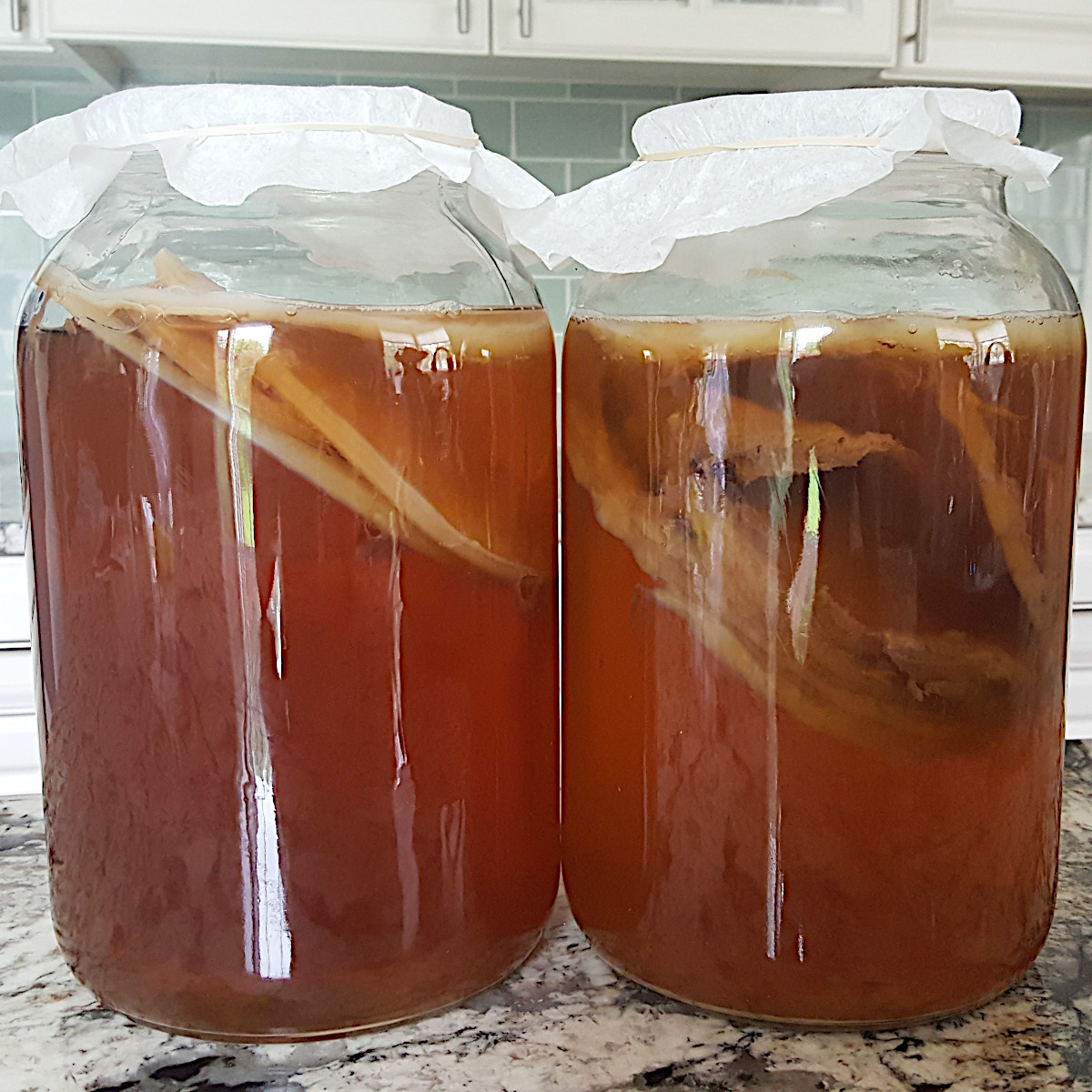Put Replacement Tea on Top of Continuous Scoby

If you've landed here, you have likely just set up your very first kombucha brew. Congrats! Unfortunately, that might have been followed by realizing that your SCOBY either sank to the bottom of your jar or is half-heartedly floating somewhere on the side of the jar. Either way, SCOBY is not floating. Oh no!! Or, oh no? It's time for us to settle this feeling of doom.
Is a Sinking SCOBY Bad?
First things first—should you be worried about this? The short answer is no! Fortunately, a sinking mother SCOBY is not at all something to worry about. There are many factors to explain why a SCOBY is not floating—we will address all of these later.
For now, you should know that your mother SCOBY can sink, float at the top, float sideways in the middle—it doesn't matter what position they are in. In fact, they will likely move throughout the brew! Many variables are at play here, but you should not be worried if your SCOBY remains closer to the bottom of your jar throughout the brew.

But I thought the SCOBY settles across the top of the jar?
This is something we hear pretty often, and it is simply a confusion of the mother vs. the baby SCOBY. The mother SCOBY is the SCOBY that you start your batch with. It is fully formed and will not grow during future fermentations (though it will likely accumulate additional yeast and brown from tannins in your tea over time). The mother SCOBY can be in any position throughout your brew without being cause for concern.
Then we have the baby SCOBY. The baby SCOBY is the SCOBY that will grow in across the top of your jar during fermentation. So, it is important that the baby grows (and ideally stays) at the top of your jar. However, the baby takes 7-21 days to fully form. So, you should not worry if you do not see the baby SCOBY for many days. It grows in very gradually, and it is very important that you do not move your kombucha vessel for at least the first 7 days in order to allow the baby SCOBY to form properly.
Do not Disturb the baby SCOBY
Every time you move your jar, forming baby SCOBY particles may sink to the bottom of your jar and the new SCOBY's growth can be inhibited. If you leave your jar alone throughout the fermentation, the baby SCOBY should be happily grown in across the top of the jar after your 7-21 day fermentation. If it sinks while you are "test-tasting" your kombucha, you need not worry. As long as you wait at least 7 days to test your kombucha, the baby SCOBY should be formed well enough to withstand a little movement! In fact, it may even sink and then rise again!
What Determines Whether a SCOBY Floats or Sinks?
There are many variables at play in determining the position of your mother SCOBY throughout a brew, but it is largely due to yeast (and variables such as temperature that affect yeast). As yeast on a SCOBY becomes more active, it may create bubbles that cause the SCOBY to float upwards. Yeast tends to be more active in warmer temperatures, so you may find that your mother SCOBY is more likely to float during warmer seasons. You may find your SCOBY is not floating during the wintertime when your house is colder.
It is also very common for your mother SCOBY to begin at the bottom of the jar and rise as your kombucha brews. Your mother and baby SCOBY may even end up growing attached, which would result in a SCOBY surface that looks similar to the one below:

Stress-Free Kombucha Brewing is Successful Brewing!
The moral of the story here is essentially that you should not worry! Kombucha brews and SCOBYs are like snowflakes: each one is unique! The best advice we have for new brewers is not to sweat the small stuff. For the best results, leave your jar undisturbed (in a dark, room temperature space with airflow) for 7-10 days to start, then you may begin checking on your brew.
Should you have questions on the appearance of your baby SCOBY, second fermentation, or anything else kombucha, you can count on us! Our site is filled with brewing resources and we are always happy to help. Happy brewing! : )
Source: https://buchabrewers.com/scoby-not-floating-sinking-scoby/
0 Response to "Put Replacement Tea on Top of Continuous Scoby"
Postar um comentário